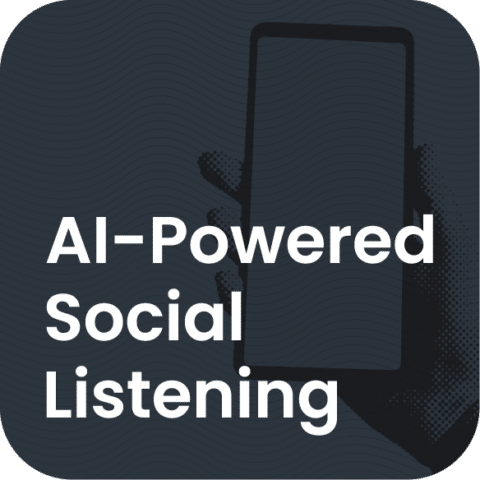What comes to mind when you hear the phrase ‘dark social’?
Just like what you can discover on the dark web, dark social conjures images of eerily unusual people, things, or events happening on social media. But actually, it’s just the act of sharing content pieces on private channels that are not trackable by third parties. Amazing, right?
For individuals seeking private conversations, dark social is ideal for promoting data privacy and security. However, for businesses monitoring their target audiences, it could be a big hit to their social media marketing and public relations strategies. They couldn’t track what stakeholders have to say about their brand and address negative criticisms.
So, how do you manage dark social and protect your brand reputation? Keep reading to find out.
Understanding Dark Social and Its Impact on PR
In today’s business landscape, the role of social media is evident in shaping modern PR strategies. With over five million active users worldwide, comprising 63% of the global population, this platform is best for engaging with diverse stakeholders.
That’s why PR practitioners cultivate positive relationships on social media, whether on platforms like Facebook, Instagram, YouTube, TikTok, or LinkedIn. Not only do they connect with stakeholders, but they also track and improve their engagements using data analytics.
But here’s the problem: Dark social prevails online, the sharing of content via ‘private’ and ‘untrackable’ social media channels. However, it extends beyond these public-facing platforms, where conversations occur behind the scenes. It was first coined in 2012 by journalist Alexis Madrigal of The Atlantic in his article, Dark Social: We Have the Whole History of the Web Wrong.
The untrackable content sharing and private conversations usually happen via the following:
- Private social networks: Facebook groups, Threads, Discord servers, and private online forums
- Personal messaging apps: Facebook Messenger, Instagram Direct, WhatsApp, Discord, and SMS
- Video content platforms: YouTube and Apple Podcasts
- Personal and professional emails: Individual and business emails
- Business communication channels: Zoom, Skype, and Slack
- Word of mouth: Texts, calls, DMs, and even in-person convos
There are only a few statistics available on dark social. But the truth of the matter is: It’s prevalent online. Back in 2016, Statista reported that nearly 85% of content pieces get shared through e-mails and messaging tools via mobile devices. These digital channels, aptly called dark social, aren’t public by design.
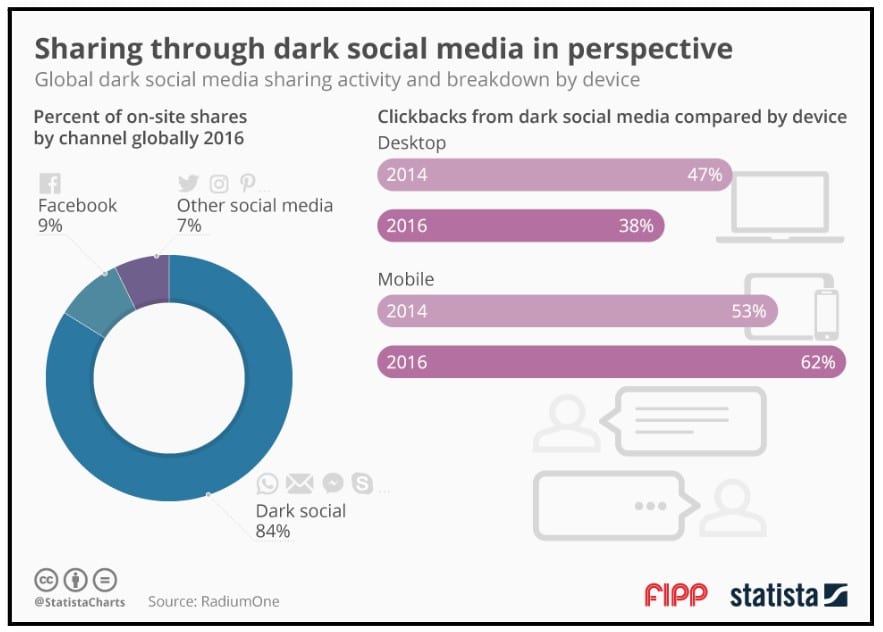
Adrian Lorga, Founder and President of 617 Boston Movers, sees a major problem with dark social for brands. Their company also maintains social media pages as a way to engage with stakeholders. However, he finds dark social an utter barrier to their marketing and PR strategies for two reasons.
Lorga says, “For one, you can’t track what stakeholders have to say about your brand. Two, you can’t quickly and easily address negative criticisms. So, how do you rise above this obstacle to your PR and marketing campaigns? You have to do more than usual by going beyond public engagement and finding creative ways to stay top-of-mind in private spaces too.”
Discover why private sharing is effective for specific industries below.
Why Private Sharing Matters More in Sensitive Industries
Brands can no longer ignore the rise of dark social. Given its prevalence, PR professionals should explore innovative social media strategies to fuel business growth. They should find a way to track content sharing in private channels and boost their engagement with stakeholders even more.
But fret not; Dark social’s impact proves beneficial to brands, particularly in specific industries. While over 60% of customers opt for private sharing, almost 85% of recommendations occur in untrackable platforms. So, as a PR professional, see how you can leverage dark social to increase your engagements and conversions.

That said, here’s why private sharing matters in sensitive industries:
- Sensitive nature: Personal topics stay private. People prefer to share information discreetly in areas such as health, finance, and security.
- Hidden influence: Dark social channels are hard to track but easy to spread. Opinions spread fast through trusted contacts.
- Vulnerable reputation: The problem is that small slip-ups grow big. Your brand reputation can be damaged silently before you notice.
- Silent trust building: Trust grows behind the scenes. Positive word-of-mouth builds loyalty in subtle yet effective ways.
For Holly Finnefrock, Founder and CEO at Everblue Pond, it doesn’t matter what industry you’re in. She believes that “PR is about connecting with people and providing real value, whether you reach out to them via public channels or dark social platforms.”
Finnefrock explains, “In sensitive industries, most conversations happen out of sight where trust is either built or broken. As a PR team, you need to recognize that private sharing isn’t a threat but an opportunity to earn loyalty. But regardless of your industry, you have to find ways to spark meaningful interactions, even when you can’t see them.”
Learn how to enhance your brand reputation in dark social in the next section.
How To Manage Dark Social and Promote Light Reputation
It’s crucial to set critical brand strategies to survive social media’s shakeup. Think of the potential ban of social media platforms, such as TikTok, as well as the shifting technological regulations, including the use of AI. Plus, consider the expansion of dark social, where you couldn’t track private conversations and assess how your target market sees your brand.
As a PR professional, find a way to penetrate dark social and position your brand reputation in a positive light. Here’s how:
1. Make the invisible more visible
Dark social is untrackable, but you can find a way to work around it. For example, you can create a personal account and join niche-relevant private groups to see how your audience thinks and feels behind the scenes. OR you can gauge them based on public commentaries made on social media channels.
Don’t worry, as you can level up your social media marketing strategy with innovative AI tools. These AI-powered tools and platforms can help you perform quantitative and qualitative analyses, as well as social listening. Here’s how:
- Quantitative tools. Track direct traffic spikes and referral patterns with platforms like Google Analytics or Mixpanel. For example, if your website suddenly sees a surge in visits without a referral source, that’s likely traffic from dark social.
- Qualitative insights. Use surveys, customer reviews, and interviews to uncover what people really think. Let’s say users keep mentioning your product in feedback forms. Those mentions may have stemmed from a private recommendation or discussion you can’t trace.
- Social listening. Monitor forums, Reddit threads, or public comments on posts to catch subtle signals. For instance, if multiple users voice the same concern on Twitter, chances are it’s being echoed in DMs and group chats, too. Consider some of the data sources listed below that are best suited for social listening.
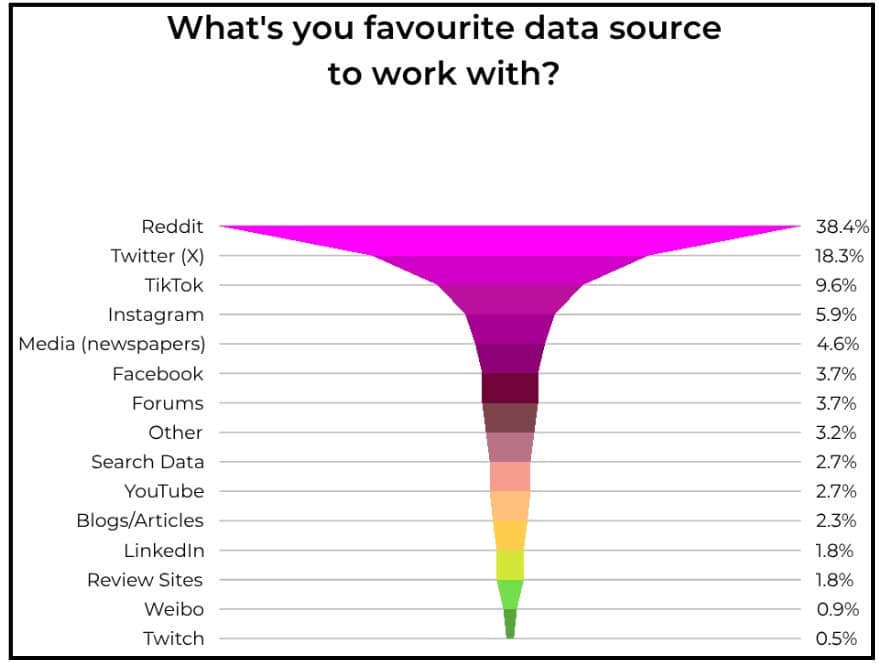
Leigh McKenzie, Community Advocate at Traffic Think Tank, recommends a perfect mix of quantitative, qualitative, and social listening approaches to unravel dark social. She believes that you can’t directly access private conversations, but you can at least have an idea of how your target audiences perceive your brand.
McKenzie says, “You can’t access every private conversation, but you can absolutely pick up on the patterns they leave behind. When you combine traffic data, direct feedback, and social listening, you get a clearer picture of what your audience is saying, both out loud and behind the scenes!”
2. Shape your brand in public places
No matter where, you should position your brand in a positive light. Make sure your brand maintains a positive image and offers genuine value, whether you’re posting blog posts, publishing industry infographics, or sharing case studies on social media. This creates echoes that reverberate even in dark social chambers. Here’s how:
- Proactively create content. Publish helpful, relevant content that people want to pass along, such as how-to guides, industry tips, or case studies. For example, a well-designed infographic breaking down industry trends can easily end up in a group chat.
- Make content sharing easy. Keep things clean and shareable. Include simple URLs, punchy captions, and visuals that are easy to screenshot or forward. If someone wants to quote you in a DM, don’t make them work for it. See how The Globe and Mail makes its article easy to share on social media channels:
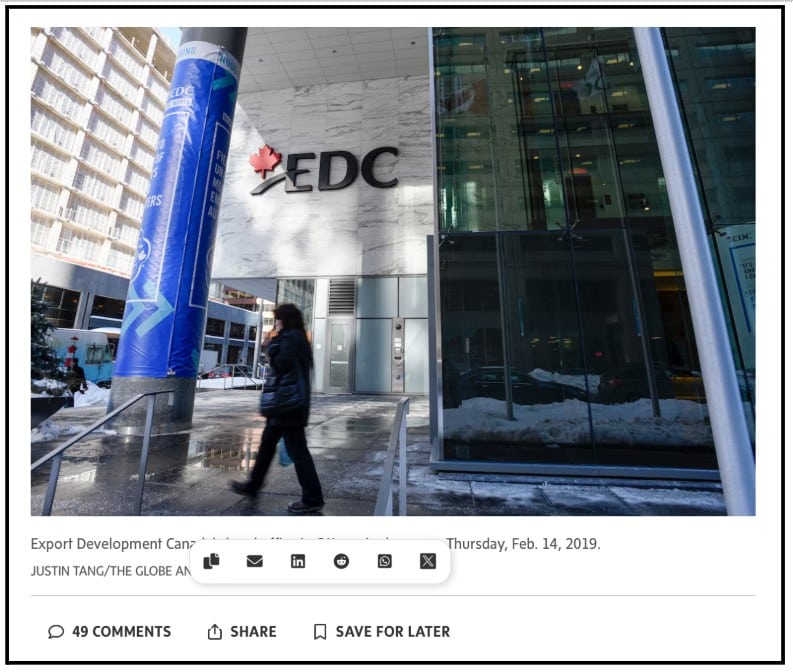
- Let satisfied clients share. Encourage happy customers to talk about their experience either through testimonials, case studies, or referral programs. Their private recommendations often carry more weight than anything you say.
- Allow your employees to advocate. Train your team to be your brand’s voice, especially online. A quick LinkedIn post or a positive reply in a Slack community from an employee can spark meaningful engagement, even in places you can’t monitor.
Sean Shapiro, Managing Partner at Axia Advisors, suggests focusing on brand-building on social media as part of your PR campaigns. He says that “your audiences live and breathe on these channels, so it makes sense to uphold a positive brand image.”
Shapiro explains, “What you share publicly can ripple through private networks, so every blog post, graphic, or case study should reflect the value your brand brings. If you show up with purpose and consistency, those messages travel further than you think.”
3. Set crisis preparedness and response
Social media crises are sometimes inevitable, no matter how much you try to protect your brand. What’s worse is when negative discussions about your business occur in dark social circles.
It can be challenging to repair brand trust after a social media misstep, especially if you’re totally clueless about the issue. So, here’s how to set a crisis management strategy in place:
- Watch out for early signals. Pay attention to unusual spikes in direct traffic, drops in engagement, or sudden shifts in sentiment. For instance, if your brand sees a sudden flood of traffic without a clear source, it could mean you’re being discussed—privately and not always positively!
- Look out for dark PR threats. Stay alert to misinformation or criticism spreading in private groups or chats. Maybe someone screenshots a bad review and shares it in a WhatsApp thread. That could quietly snowball into a bigger issue if left unaddressed.
- Tackle issues as soon as possible. Don’t wait for the story to go public. As soon as you catch wind of a potential problem, respond with honest, timely messaging. Even a quick clarification on your official channels can help prevent negative narratives from gaining momentum.
Case in point: KFC’s PR crisis due to chicken shortage in 870 UK and Ireland restaurants. It caught social media users by storm back in 2018 by giving feedback in both public and private channels.
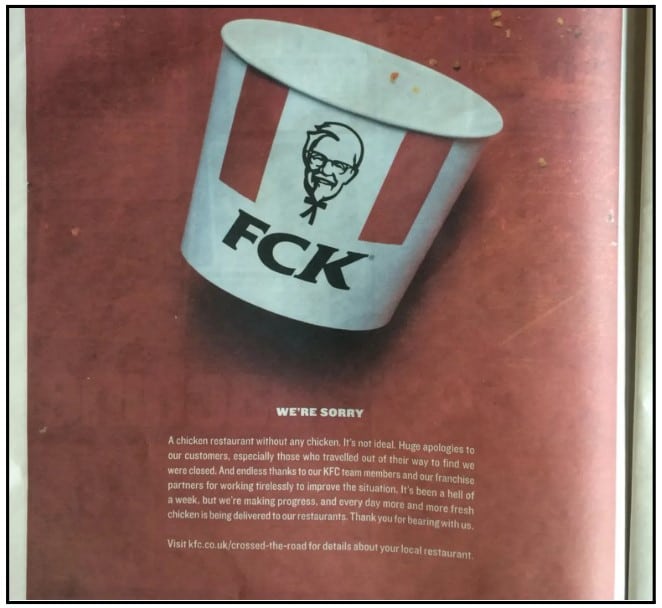
Instead of ignoring complaints, they owned the issue with a bold, humorous ad that replaced their logo with “FCK.” They also quickly addressed issues point by point on social media, particularly on X (Twitter):
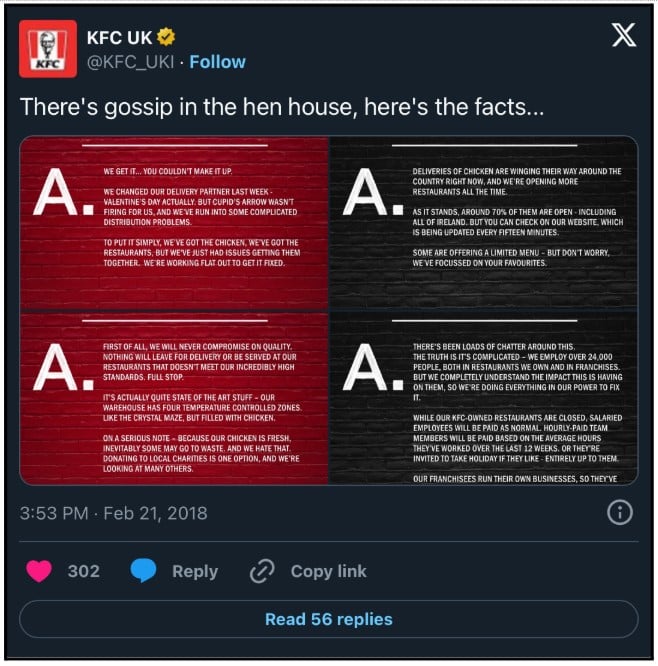
Their quick response, direct engagement, and ongoing updates helped calm customer frustrations and turn a PR mess into a reputation win. The key takeaway? The earlier you spot a crisis, the easier it is to manage!
For Emily Ruby, Owner at Abogada De Lesiones, it’s essential to be one step ahead of any potential crisis on social media. She claims that it allows you to take urgent steps before small issues escalate to bigger ones.
Ruby shares, “Staying ahead of a potential crisis gives you the chance to act before things spiral. When conversations are happening in private, you need to be extra alert. Why? By the time they go public, the damage might have already been done. In my view, prevention is always better than a cure, especially in the age of dark social.”
Final Words
Dark social platforms have long existed and thrived. Individuals can share content pieces and engage in private conversations on social media platforms without being tracked. But amid its existence, do what it takes to protect your brand and save your reputation.
That said, follow the crucial steps above to manage dark social and promote a positive reputation. Consider three things:
- Monitor and measure the invisible.
- Manage reputation in dark channels.
- Establish crisis preparedness and response.
With all these in place, you need not worry about what happens in private social media channels. Ultimately, prospects and customers will continue to patronize your brand and support your products or services!
Ready to boost your brand reputation amidst dark social? Agility PR Solutions offers an AI-powered platform for PR campaigns—Book a demo to speak with an expert!



